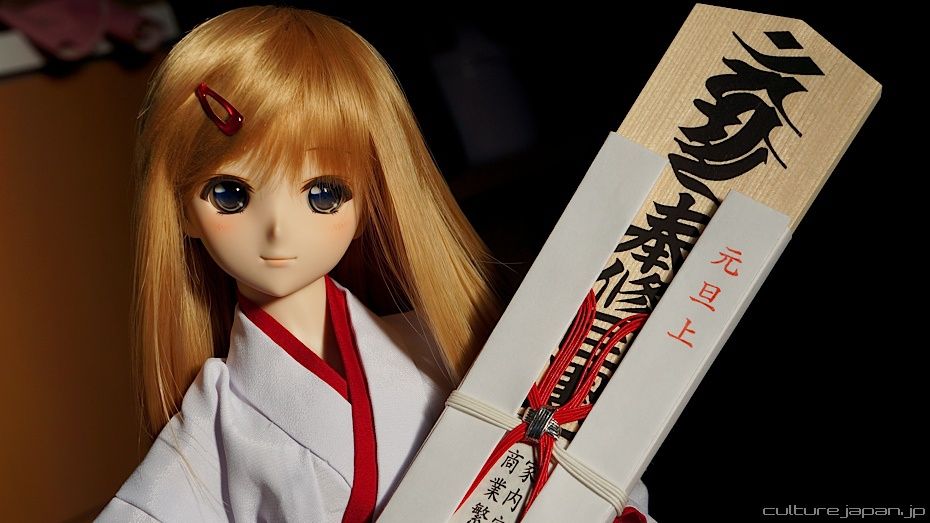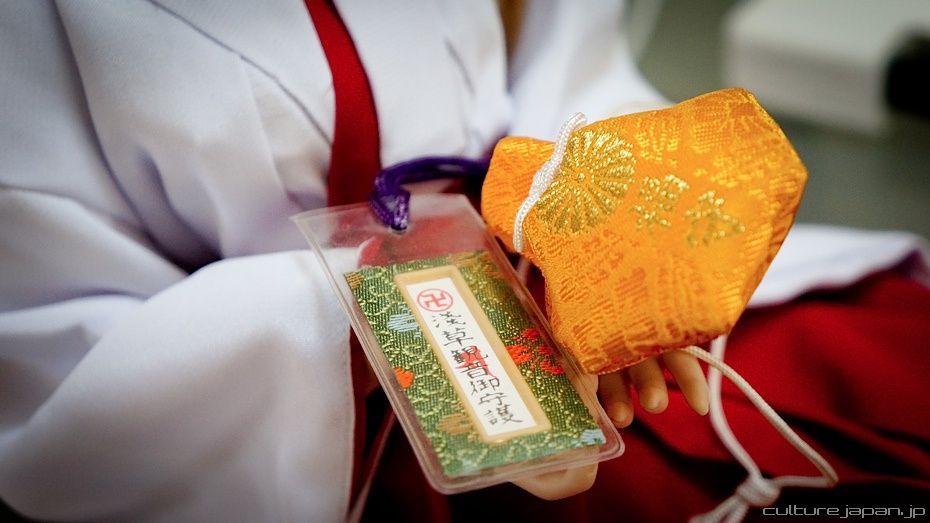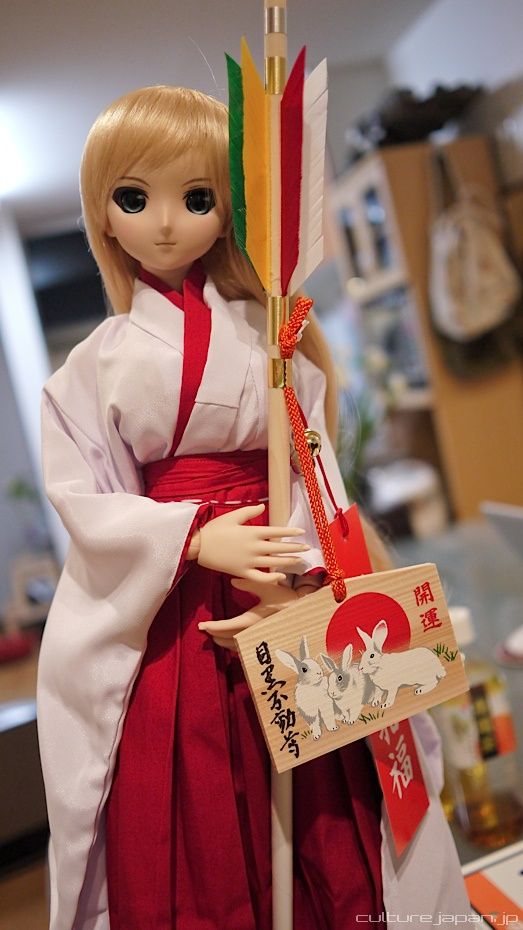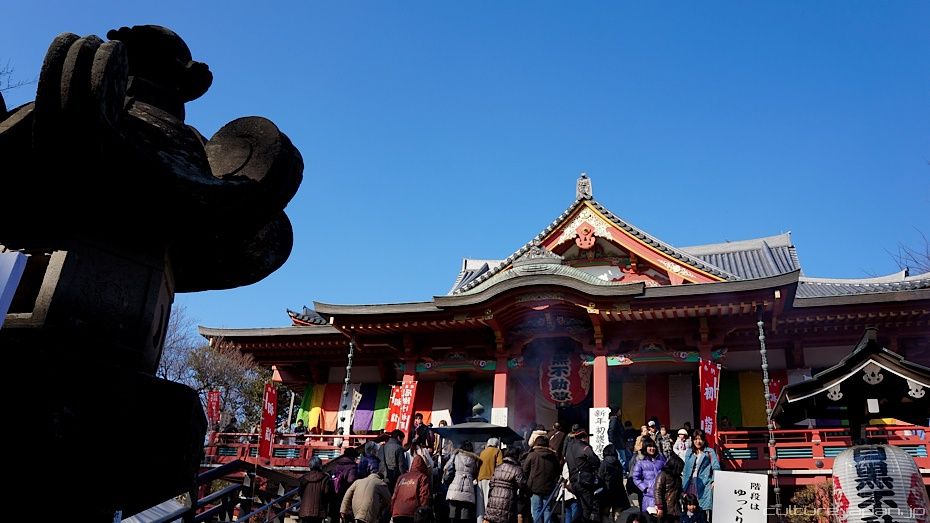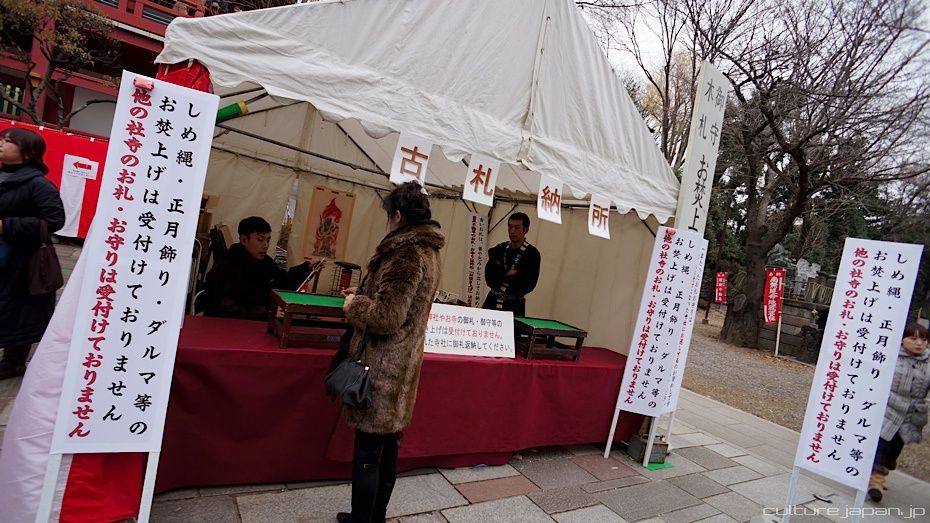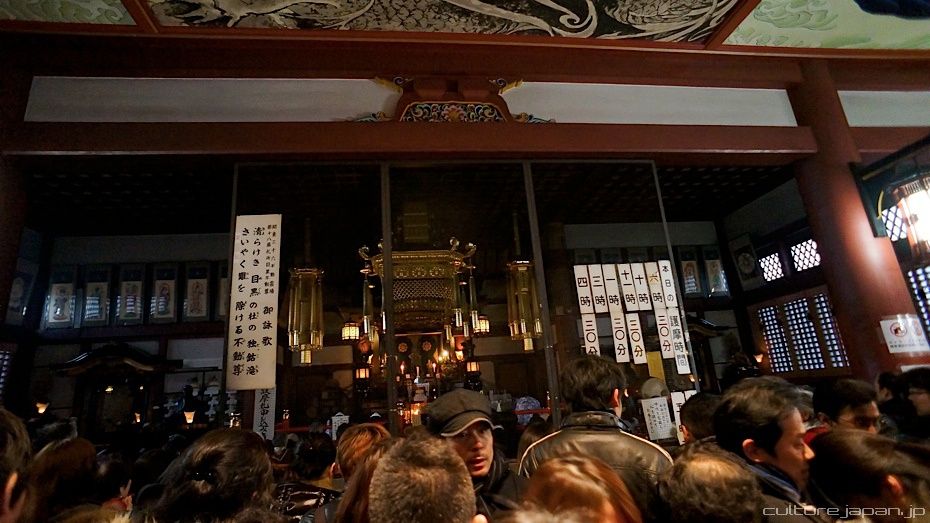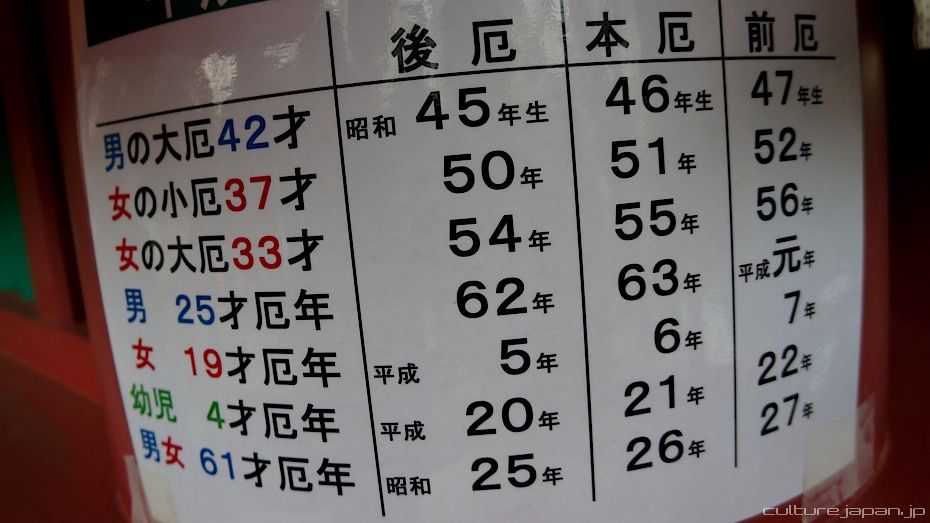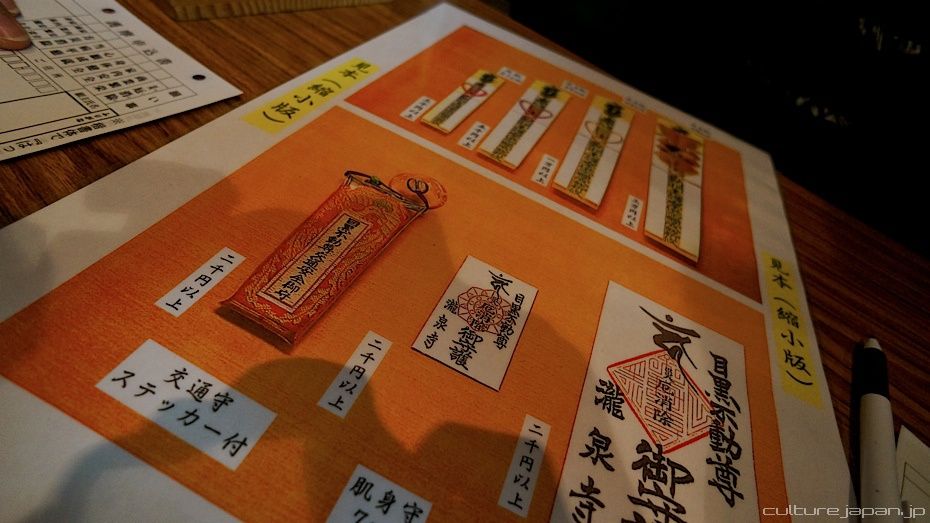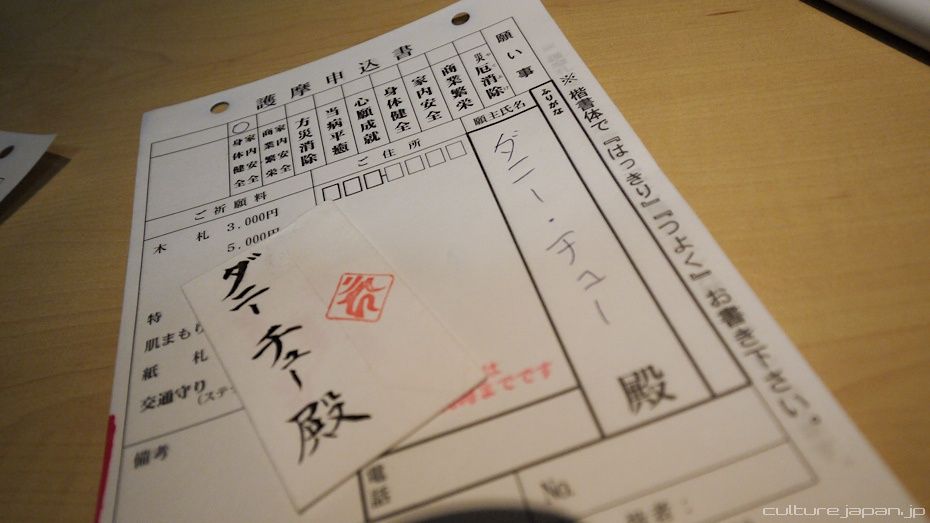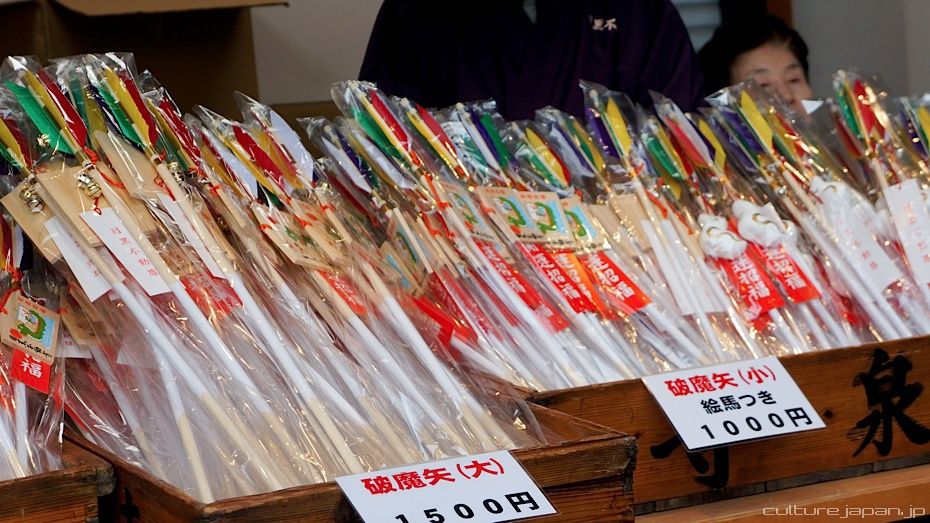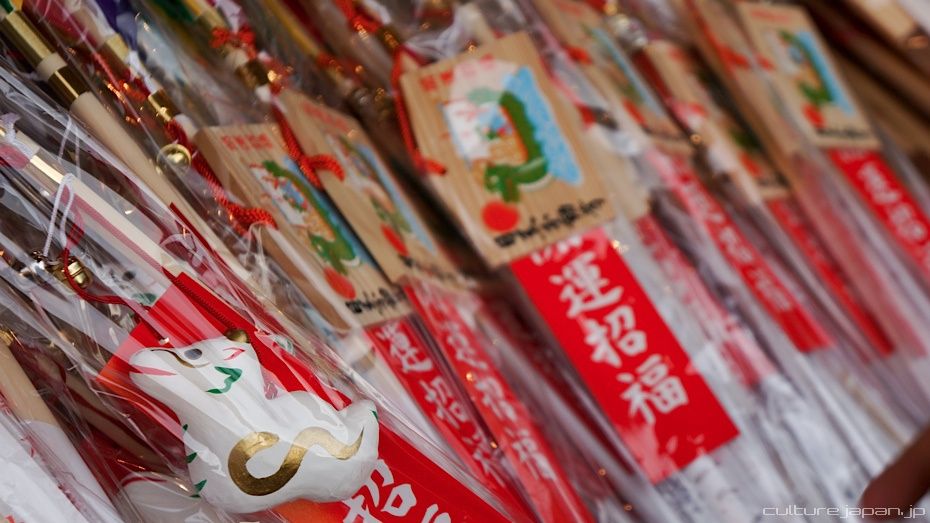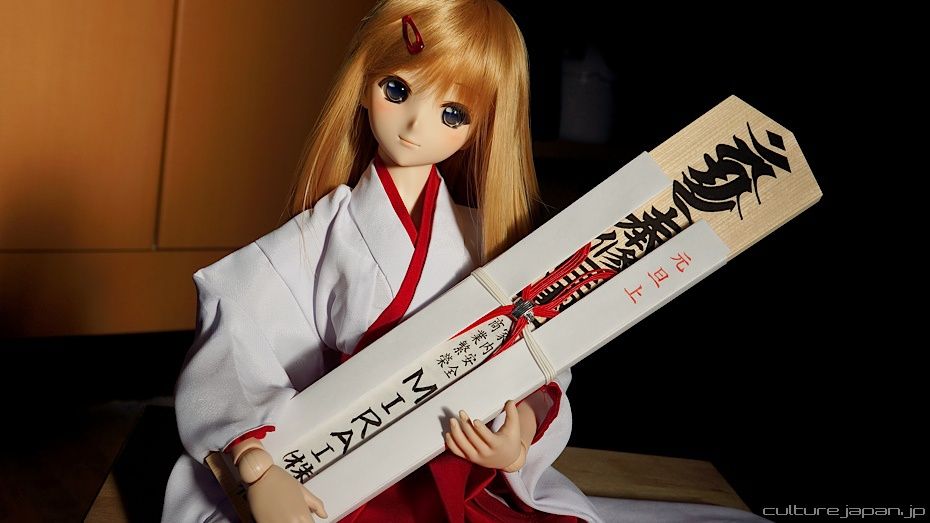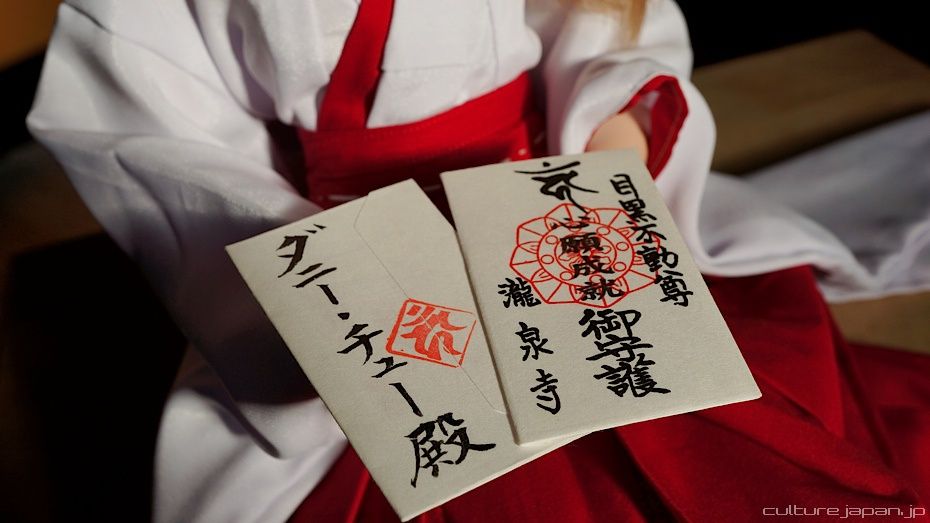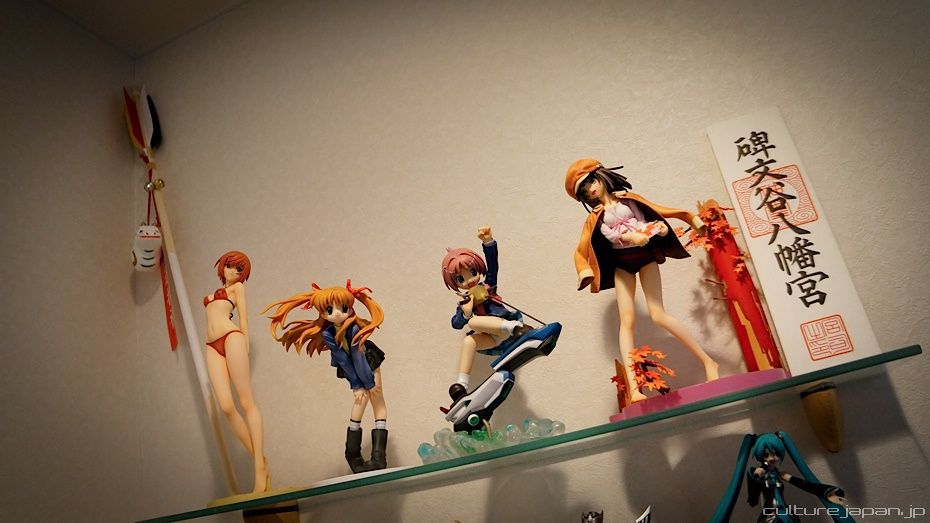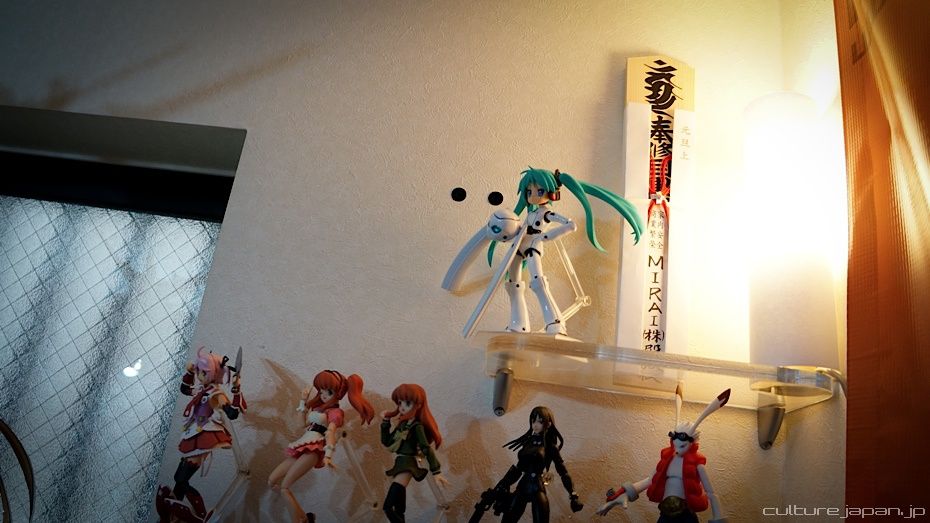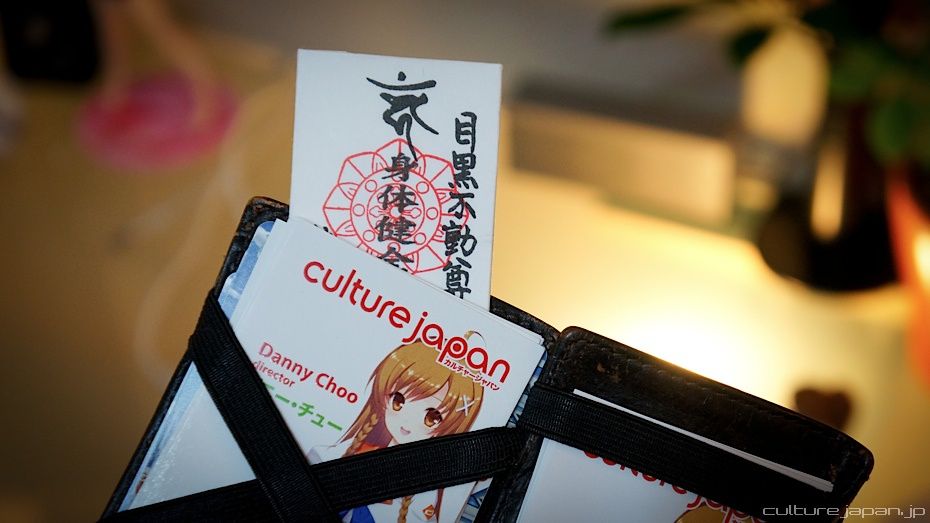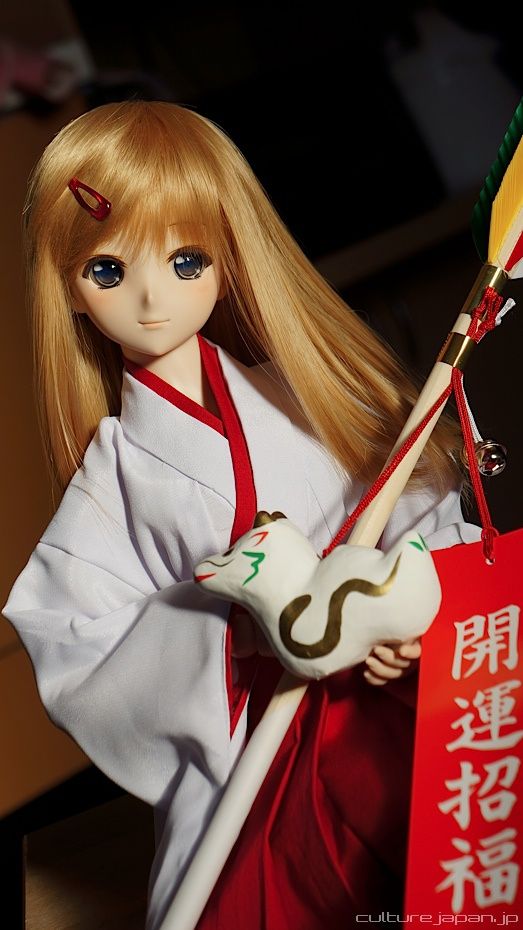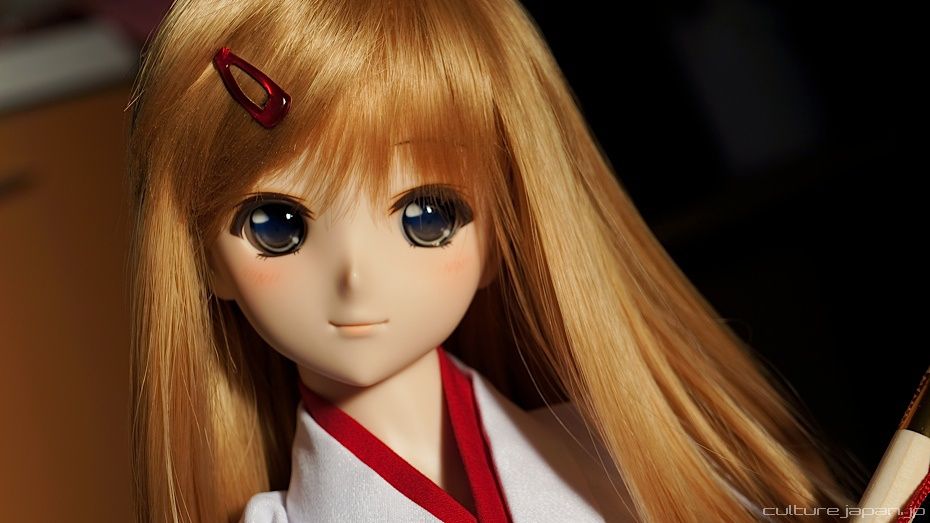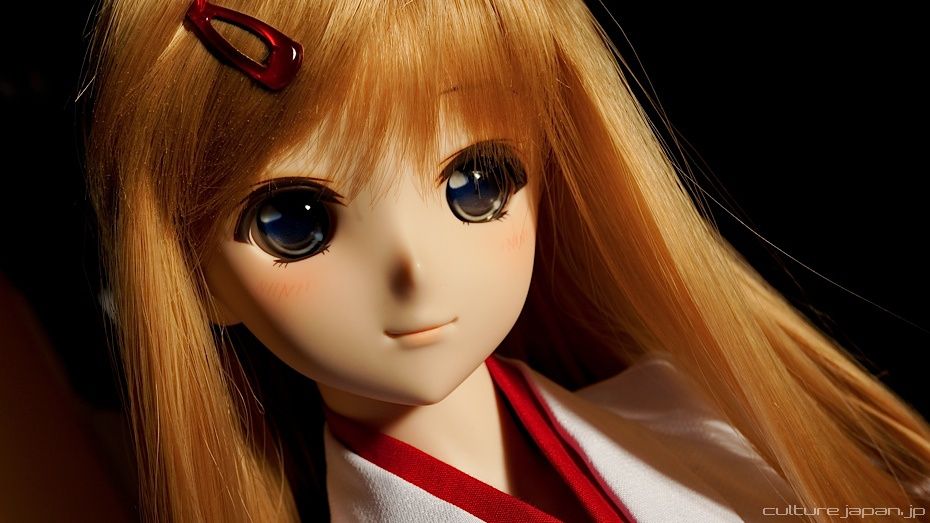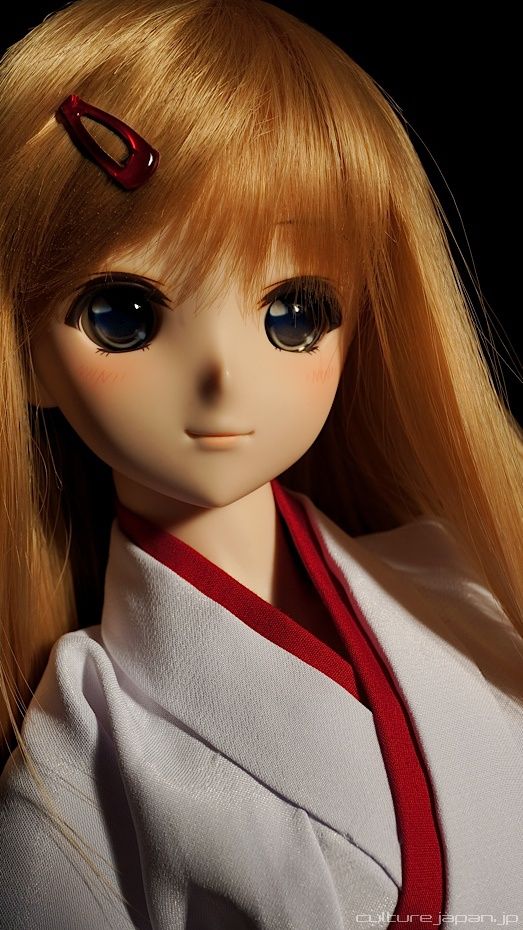Japanese Amulets
Japanese amulets (charms, talisman, omamori, ofuda, gofu etc) are carried or displayed about ones person which either bring good fortune, ward off bad luck or evil spirits or protect us from calamity.
The amulets come in different shapes and sizes but are usually made of paper or wood with some of them being wrapped in cloth. Smaller amulets are known as Omamori ]. These ones are usually carried about ones person. Many school children tie them to their randoseru.
Lately there have been anime themed Omamori but many dont mention whether they have been blessed or not. If you are picking up an anime themed Omamori then you should treat it more like a novelty item or a token rather than something spiritual.
This arrow is called a "Hamaya" ] and is directly translated as an arrow that destroys evil demons. This Hamaya has been protecting us for the past year and must be brought back to the temple to be renewed.
This is our local temple called Meguro Fudouson Ryusenji temple located in Meguro.
The temple was built in the year 808. In 1615, the temple was burned down in a fire but was restored under the Tokugawa shogunate in 1624.
The nearest stations are Musashikoyama and Nishikoyama on the Meguro line.
The temple was built in the year 808. In 1615, the temple was burned down in a fire but was restored under the Tokugawa shogunate in 1624.
The nearest stations are Musashikoyama and Nishikoyama on the Meguro line.
Inside the temple grounds is a place where you return all the amulets or talismans that have been protecting you throughout the year. From here, they are all burned as a respect to the deity who has been protecting you.
Amulets and talismans can be purchased from shrines or temples but you must return them to the place that you got them from - dont try to return an amulet that you bought from one temple to another temple. The difference between a shrine and a temple in a separate post - I (and even local Japanese folks) get confused between the two.
Inside the main temple. In the middle there is a box called Saisen Bako ] where you would throw money before making a prayer. You would often see the box drawn in Tohou illustrations.
Usually one would throw a 5 yen coin - the pronunciation for "5 yen" in Japanese is "Go-en" (pronounced "goh en") and is the same pronunciation as "ご縁" meaning "good luck or fate."
Usually one would throw a 5 yen coin - the pronunciation for "5 yen" in Japanese is "Go-en" (pronounced "goh en") and is the same pronunciation as "ご縁" meaning "good luck or fate."
Behind the Saisen Bako is where one will see many priests blessing the amulets and talisman before they are handed over to the owner.
This chart outlines whether you are going to have a year of bad luck or not in 2012.
Gender/Age
Male 42
Female 37
Female 33
Male 25
Female 19
Youngster 4
Male/Female 61
Gender/Age
Male 42
Female 37
Female 33
Male 25
Female 19
Youngster 4
Male/Female 61
If your gender and age match any of the above then you can luckily ask a priest in the temple grounds to ward off evil spirits and purify you - and yes it will cost you extra. Amulets and talisman will also help negate the bad luck. But even after a blessing or being armed with an amulet, you are not rid of your year of bad luck - just proceed with caution for that year ^^;
Here are the different types of amulets and talisman that you can buy - all of these do different things. Once you have placed your order, you will need to wait for a while because your personalized amulet or talisman are blessed in the main temple. You can sit and watch if you want but remember to take off your shoes.
This form needs to be filled in and boxes should be checked depending on what type of protection or luck you want which are:-
-Ward off calamity
-Flourishing business
-Safety for family
-Good health
-Prayers are fulfilled
-Prevent my current illness from getting worse
-Save me from these rough seas
-Safety for family+Flourishing business combo pack
-Safety for family+Good health combo pack
-Ward off calamity
-Flourishing business
-Safety for family
-Good health
-Prayers are fulfilled
-Prevent my current illness from getting worse
-Save me from these rough seas
-Safety for family+Flourishing business combo pack
-Safety for family+Good health combo pack
Which would you choose?
Time to pick up a new Hamaya.
Not all Hamaya ward off evil - some of them bring good fortune too like these ones.
We usually get one with the Ema (the wooden plaque) so went for the one with the ceramic dragon instead. We got a small one that cost 1000 yen.
Yuki shows us what amulets and talismans we have for 2012. This is the Hamaya.
This is a talisman called "Ofuda" ] which is usually displayed at home or in the office. This is a wooden one but there are paper versions too. The 3 pieces of paper that Hakumu Reimu from Tohou holds are Ofuda.
These are Omamori amulets - one for wifey and one for me. These have been personalized and blessed to protect us.
Whatever you do - never open an Omamori!
You are not restricted to having Omamori or Ofuda from one temple or shrine - the Ofuda on the right is from a different shrine. Hamaya or Ofuda should be placed in a high location - which is why you will see these near the ceiling when entering a Japanese household or office.
Our Ofuda for the office is displayed in this corner - we chose "Flourishing Business and Safety for Family."
My Omamori is kept in my business card holder until this time next year.
And if you are wondering what Yuki is holding - its called an Oonusa ] which is a wooden wand with zigzag shaped paper on the end its used during purification rituals. If you have seen this in anime or games - now you know ^^
Leaving you with more photos of Yuki.
All photos snapped on the Sony NEX-5N.
